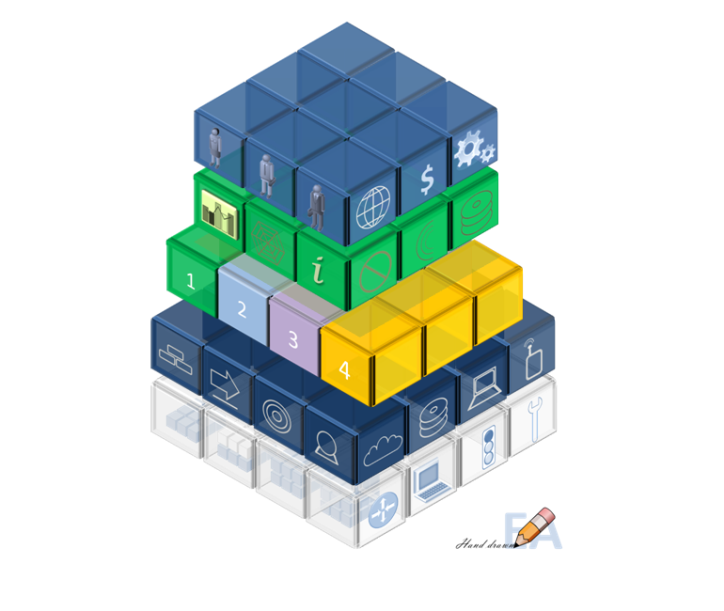
Enterprise Architecting
for customer-centric nework designs
Enterprise Architecture aligns ICT technologies and practices with an organisation's strategic objectives and is a facilitator of business operations. It shifts focus to what is a best outcome for an enterpirse and away from IT-centricity.
- It provides demonstrable value for proposed services by linking designs to qualified business outcomes
- Integration is inherent - integration of technologies, integration with customers' processes and with their 3rd parties (e.g. their customers, their suppliers and any other ICT provider they may use)
- It provides for a technology roadmap - EA can apply to a fixed problem at a fixed point in time, but the broader application of EA is that it provides for future-focused designs.
Network Architecture Taxonomy
An Architecture classification scheme (the taxonomy) allows a complex ICT environment to be broken down into its component parts, and allows for the interdependencies and relationships between those components to be identified and considered in all design efforts.While only one part of Enterprise Architecture, a taxonomy is a good starting and common reference point as it classifies architecture at multiple levels, with business aspects as the primary level to drive top-down design.
In addition to a taxonomy, other Enterprise Architecture modelling practices include:

 Building blocks are replicable components, that based on the way they are configured, together make up an architecture
and may be physical, logical, virtual or theoretical.(The Open Group)
Building blocks are replicable components, that based on the way they are configured, together make up an architecture
and may be physical, logical, virtual or theoretical.(The Open Group)
Tags, references and acknowledgements
AUSDAF Benefits Realisation Cloud DODAF eTOM FCAPS - FAB Framework Frameworx Functional Performance Specifications Functional Requirements Governance Innovation ITIL Library Mission System MODAF NGOSS OASIS OMG Performance Framework PMBOK Principles Reference Model Reference Views SABSA Service Levels SFIA SOA Statement Of Work Support System Technology Roadmap Views and Viewpoints Work Breakdown Structure XaaS Zachman



